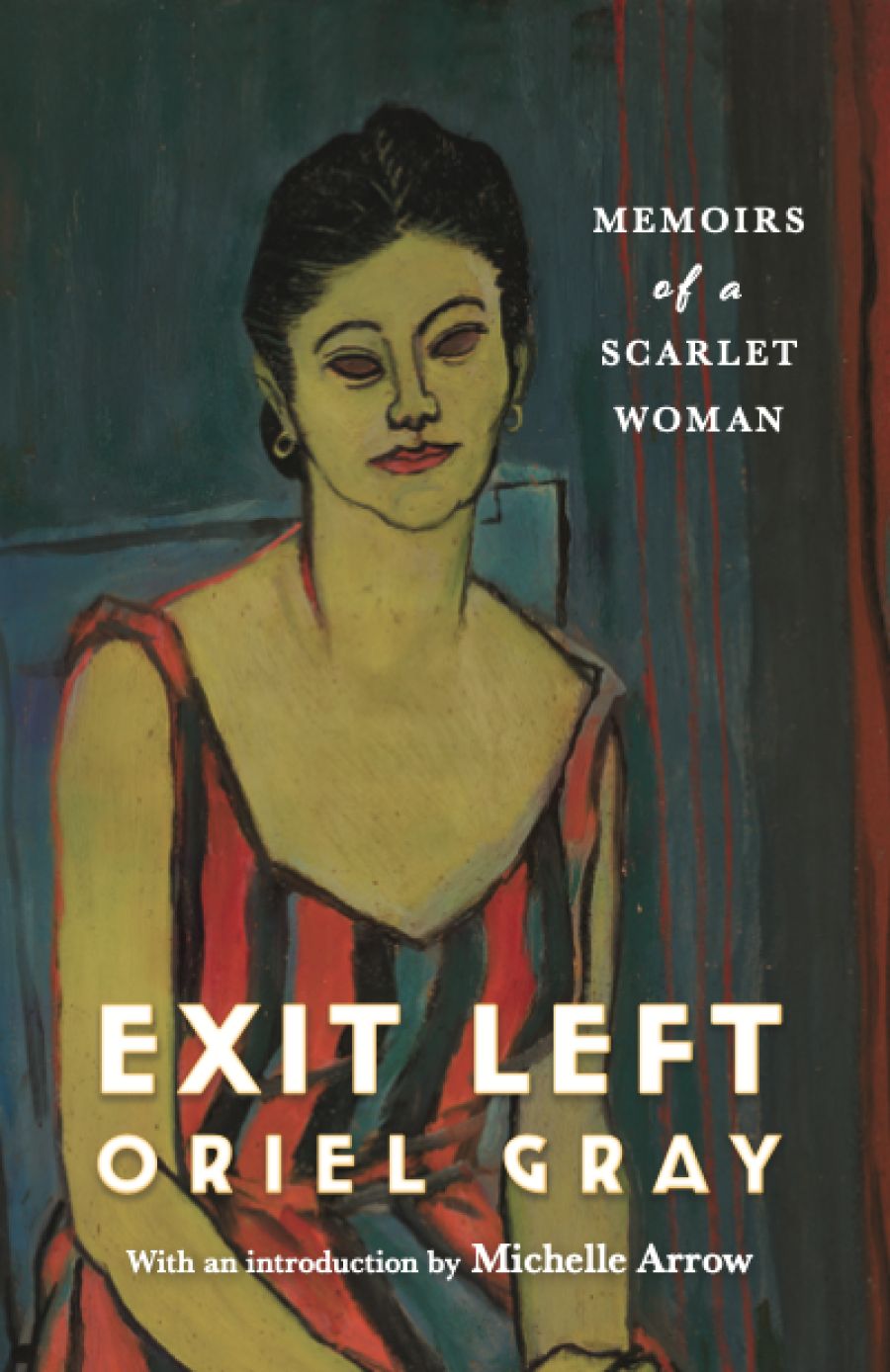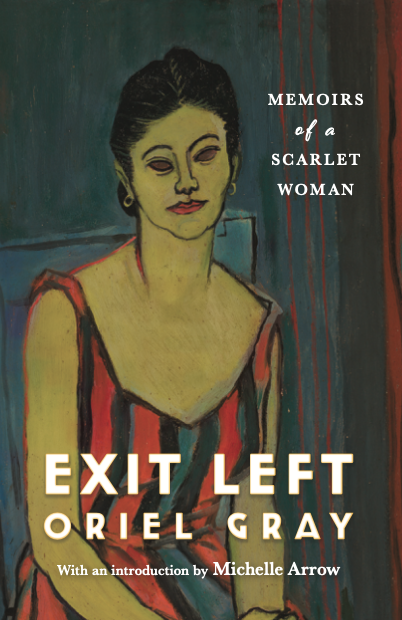
- Free Article: No
- Contents Category: Non-fiction
- Review Article: Yes
- Article Title: Memoir of a scarlet woman
- Online Only: No
- Custom Highlight Text:
How do we explain our fascination with autobiography? Is it simply the pleasure of vicarious experience, or is it perhaps the self-indulgence of nostalgia, or even the addiction to gossip, the wish to know the hidden weaknesses of the famous or infamous? Oriel Gray’s Exit Left satisfies all these expectations, worthy and unworthy, as it takes us back to an earlier Australia which would appear to most of us remote, simplistic and naive.
- Book 1 Title: Exit Left
- Book 1 Biblio: Penguin, 230pp., $7.95pb
- Book 1 Cover Small (400 x 600):

- Book 1 Cover (800 x 1200):

The title, first of all, alerts us to the fact that this is a book about the theatre, and union specifically the Theatre of the Left. It deals in part with Sydney’s New Theatre, dedicated to Socialist Realism and polemical drama, where Oriel Gray was resident playwright for a number of years – years which were crucial for the Australian Communist Party. There are compelling and gossipy glimpses of personages associated with the New Theatre, such as actor John Gray, whom Oriel married; the set designer Cedric Flower; the Witch of the Cross, Rosaleen Norton; and not least of all a young and Leftish James McAuley, Ern Malley hoaxer and one of the writers of the New Theatre’s most successful wartime reviews – ‘I’d Rather be Left’. The arrangement of the book into four Acts, as well as expressing the cliche that life is but a stage, reinforces its concern with the world of theatre, while the opening and closing references to Lewis Carrol’s Through the Looking Glass suggest the distorted values of this world. The chapter headings, for instance that of the chapter dealing with Rosaleen Norton and Cedric Flower:
Getting the act together, along with a witch and a wolf in queen’s clothing
indicate the wittiness and vitality of Gray’s reminiscences.
The sub-title, ‘Memoirs of a Scarlet Woman’, introduces the personal element, the reminiscences of someone who may well have been sexually adventurous (scarlet?) and was certainly a Communist (a red?). My judgement would be pink, in each case. For instance Gray recalls that:
…the politics we talked was mostly jargon that we had picked up – a parrot could have done as well and been more decorative
and the world that Gray evokes is one of sexual reticence, although not sexual reluctance.
There is a compelling account of Gray’s marriage and its breakdown, of her affair with John Hepworth, writer and journalist (her sister’s bigamous husband and, according to Gray, “the man who put the ‘f’ in AIF”) and their stormy life together, and apart, after the war.
As well as the politics of personal relationships, the book records the major political events of the period as seen through the eyes of a civilian and a Communist. Everyday glimpses of wartime life in Sydney are counterpointed with Gray’s recollection of the effect upon civilians of the air raids on Darwin, the midget submarine attacks on Sydney, the sinking of the Centaur, the dropping of the Atom Bomb and the return of the Eighth Division from Singapore.
What is more interesting is Gray’s account of the changes in attitude required of this Communist, at least, to accommodate Stalin’s treaty with fascist Germany (puzzled pacificism), Hitler’s invasion of Russia (martial ardour), the coal strike of 1949 and the subsequent defeat of the Labor Party (disillusion). I hope, however, that most of Gray’s memories are more reliable than her description of the beautiful, almost mountainous countryside around Lismore. Gray saw it as “unattractive … flat and rather scruffy”. The book suffers too from occasional patches of banal writing, and occasional flashes of sentimentality – but that’s how it was!


Comments powered by CComment